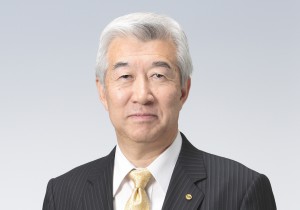
Toyota EVP Mitsuhisa Kato outlined the automaker's New Global Architecture to build better vehicles.
After briefly putting growth on hold, Toyota Motor Co. has unveiled the “architecture” of its global growth strategy, a plan that relies on new products, new technologies, and improved quality and reliability.
The strategy, dubbed Toyota New Global Architecture, or TNGA, the announcement marks the end of the “intentional pause” Toyota President Akio Toyoda had ordered as the maker took stock following a series of quality and safety problems several years ago.
The goal is to allow Toyota to grow in a “sustainable way,” said Executive Vice President Mitsuhisa Kato during a presentation at the maker’s headquarters in Toyota City, 200 miles southwest of Tokyo. That and other challenges are “making our effort to come out with ever better cars increasingly difficult.”
Toyota’s problems came to the fore in 2009 when the maker began a series of recalls related to problems with so-called unintended acceleration. The Japanese giant was responsible for the recall of more individual vehicles than any other manufacturer during five of the last seven years in the U.S. market – though rival General Motors recalled nearly half of the 64 million vehicles covered in 2014.
The unintended acceleration problem briefly tarnished Toyota’s long-standing reputation for quality and reliability, but studies show it has largely regained its image in most markets, including the critical U.S., where it has lately landed on top of a variety of quality and reliability studies.
Toyota still faces problems in some markets, especially in China where Japanese makers have been caught in the middle of a political dispute between the two countries. A number of dealers have threatened to quit their Toyota franchises due to low sales and mounting losses. In turn, strong Chinese sales by Volkswagen AG have put the German maker within striking distance of toppling Toyota as the world’s top-selling automaker.
The use of the term, “architecture” for Toyota’s new strategy is appropriate considering the maker will now move to new, cost-saving platforms – also known as architectures – for at least half of its vehicles by 2020. VW has taken a similar step, its MQB platform soon to serve about half of the products sold by its dozen passenger car brands.
The new platforms will make it possible to use more advanced manufacturing methods. During a demonstration, Toyota officials showed how they could trim the time needed to laser weld screws on a body line from 2 seconds to 0.3 seconds. They also showed off new, more flexible robots and stamping machines.
(Scion teases two debuts for New York Auto Show. For more, Click Here.)
The Japanese maker was a pioneer in developing so-called “lean manufacturing,” and a fundamental element of the vaunted Toyota Production System is “kaizen,” the concept of continuous improvement.
Future vehicles, Kato and other executives promised, will be sturdier and safer, while there will be a more aggressive push to boost fuel efficiency, especially through the use of hybrids. Toyota on Thursday confirmed it will reveal a new gas-electric version of its RAV4 at the New York Auto Show next week. It expects to have hybrid versions of all of its primary models by 2020.
(Click Here for more on the 2016 Toyota RAV4 Hybrid.)
New products also will be designed to be safer using a variety of advanced digital technologies, such as radar, cameras and other sensors that can help avoid a crash in the first place.
Company officials did not announce any new sales targets. Toyota sold 10.23 million vehicles in 2014, but has warned sales will actually dip a bit below earlier forecasts during the final quarter of its fiscal year, which ends on Maarch 31.
(To see more about the debut of the new 2016 Lexus RX, Click Here.)
The new plan is “impressive in its aspirations and, frankly, the scale,” Kurt Sanger, a senior automotive analyst at Deutsche Securities, told the Associated Press following the Toyota presentation.
